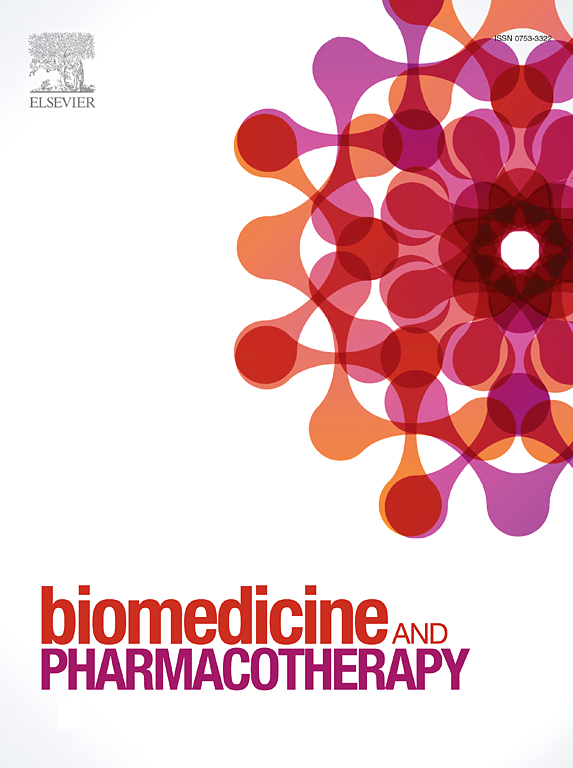核黄碱和n -乙酰半胱氨酸保护正常前列腺细胞免受化疗诱导的氧化应激,同时选择性调节甲氨蝶呤和多西紫杉醇对前列腺(PC-3)和乳腺癌(MCF-7)细胞的细胞毒性
IF 6.9
2区 医学
Q1 MEDICINE, RESEARCH & EXPERIMENTAL
引用次数: 0
摘要
背景:肿瘤化疗对快速分裂的正常细胞具有非选择性的细胞毒性,常导致严重的副作用。这些不良反应主要是由活性氧(ROS)产生升高引起的氧化应激引起的。核糖碱(RIB)是一种合成的谷胱甘肽(GSH)前体,n -乙酰半胱氨酸(NAC)是一种临床使用的抗氧化剂,在减轻氧化损伤方面有希望;然而,它们对化疗疗效的影响及其分子机制尚不完全清楚。目的本研究旨在评价RIB和NAC对甲氨蝶呤(MET)和多西紫杉醇(DOC)诱导的正常细胞和癌细胞的细胞保护作用,并利用综合网络药理学和分子对接方法探讨其机制途径。方法:使用Resazurin法评估MET和DOC单独或联合RIB或NAC在正常前列腺上皮(PNT-2)、前列腺癌(PC3)和乳腺癌(MCF-7)细胞系中的细胞毒性作用。分别用DCF和OPA荧光法测定细胞内ROS和GSH水平。使用SwissTargetPrediction、STRING、ShinyGO、Cytoscape和AutoDock Vina平台进行网络药理学、蛋白-蛋白相互作用(PPI)分析、基因本体(GO)、京都基因与基因组百科全书(KEGG)富集和分子对接。结果met和DOC对PNT-2和PC3细胞具有剂量依赖性的细胞毒性,但对耐药MCF-7细胞的作用有限。RIB和NAC显著降低了PNT-2细胞的ROS水平,恢复了GSH水平,保护它们免受氧化损伤。这些抗氧化剂在PC3细胞中保留了抗癌作用,但在MCF-7细胞中降低了化疗效果,可能是由于氧化还原缓冲和转运蛋白表达升高。网络分析发现BCL-2、MAPK8和SOD是关键的抗氧化和凋亡靶点。然而,没有对这些机制进行直接的实验验证,也没有评估凋亡标志物,如Annexin V或caspase-3。结论在化疗过程中,rib和NAC对正常前列腺细胞具有选择性的细胞保护作用,同时对敏感前列腺癌细胞保持抗肿瘤作用。然而,它们同时用于耐药癌症如MCF-7可能会降低药物疗效,需要谨慎的临床应用。可探索时移抗氧化给药(如化疗后)作为平衡保护和疗效的策略。未来的研究应包括体内验证、细胞凋亡分析和蛋白质水平的机制分析,以确认预测的途径。本文章由计算机程序翻译,如有差异,请以英文原文为准。
Riboceine and N-acetylcysteine protect normal prostate cells from chemotherapy-induced oxidative stress while selectively modulating the cytotoxicity of methotrexate and docetaxel in prostate (PC-3) and breast cancer (MCF-7) cells
Background
Cancer chemotherapy often results in severe side effects due to its non-selective cytotoxicity toward rapidly dividing normal cells. These adverse effects are largely driven by oxidative stress resulting from elevated reactive oxygen species (ROS) production. Riboceine (RIB), a synthetic precursor of glutathione (GSH), and N-acetylcysteine (NAC), a clinically used antioxidant, hold promise in mitigating oxidative damage; however, their impact on chemotherapy efficacy and the molecular mechanisms involved remain incompletely understood.
Aim
This study aimed to evaluate the cytoprotective potential of RIB and NAC against methotrexate (MET)- and docetaxel (DOC)-induced toxicity in normal and cancer cells, and to explore mechanistic pathways using integrative network pharmacology and molecular docking approaches.
Methodology
Cytotoxic effects of MET and DOC, alone or in combination with RIB or NAC, were assessed in normal prostate epithelial (PNT-2), prostate cancer (PC3), and breast cancer (MCF-7) cell lines using the Resazurin assay. Intracellular ROS and GSH levels were quantified using DCF and OPA fluorescence assays, respectively. Network pharmacology, protein–protein interaction (PPI) analysis, Gene Ontology (GO), Kyoto Encyclopedia of Genes and Genomes (KEGG) enrichment, and molecular docking were conducted using SwissTargetPrediction, STRING, ShinyGO, Cytoscape, and AutoDock Vina platforms.
Results
MET and DOC showed dose-dependent cytotoxicity in PNT-2 and PC3 cells, but limited efficacy in chemoresistant MCF-7 cells. RIB and NAC significantly reduced ROS and restored GSH levels in PNT-2 cells, protecting them against oxidative injury. These antioxidants preserved anticancer effects in PC3 cells but reduced chemotherapy efficacy in MCF-7 cells, likely due to elevated redox buffering and transporter expression. Network analyses identified BCL-2, MAPK8, and SOD among key antioxidant and apoptotic targets. However, no direct experimental validation of these mechanisms was performed, and apoptotic markers such as Annexin V or caspase-3 were not assessed.
Conclusion
RIB and NAC provide selective cytoprotection to normal prostate cells during chemotherapy while maintaining anticancer effects in sensitive prostate cancer cells. However, their concurrent use in resistant cancers like MCF-7 may reduce drug efficacy, warranting cautious clinical application. Time-shifted antioxidant administration (e.g., post-chemotherapy) could be explored as a strategy to balance protection and efficacy. Future studies should include in vivo validation, apoptosis profiling, and protein-level mechanistic assays to confirm the predicted pathways.
求助全文
通过发布文献求助,成功后即可免费获取论文全文。
去求助
来源期刊
CiteScore
11.90
自引率
2.70%
发文量
1621
审稿时长
48 days
期刊介绍:
Biomedicine & Pharmacotherapy stands as a multidisciplinary journal, presenting a spectrum of original research reports, reviews, and communications in the realms of clinical and basic medicine, as well as pharmacology. The journal spans various fields, including Cancer, Nutriceutics, Neurodegenerative, Cardiac, and Infectious Diseases.

 求助内容:
求助内容: 应助结果提醒方式:
应助结果提醒方式:


